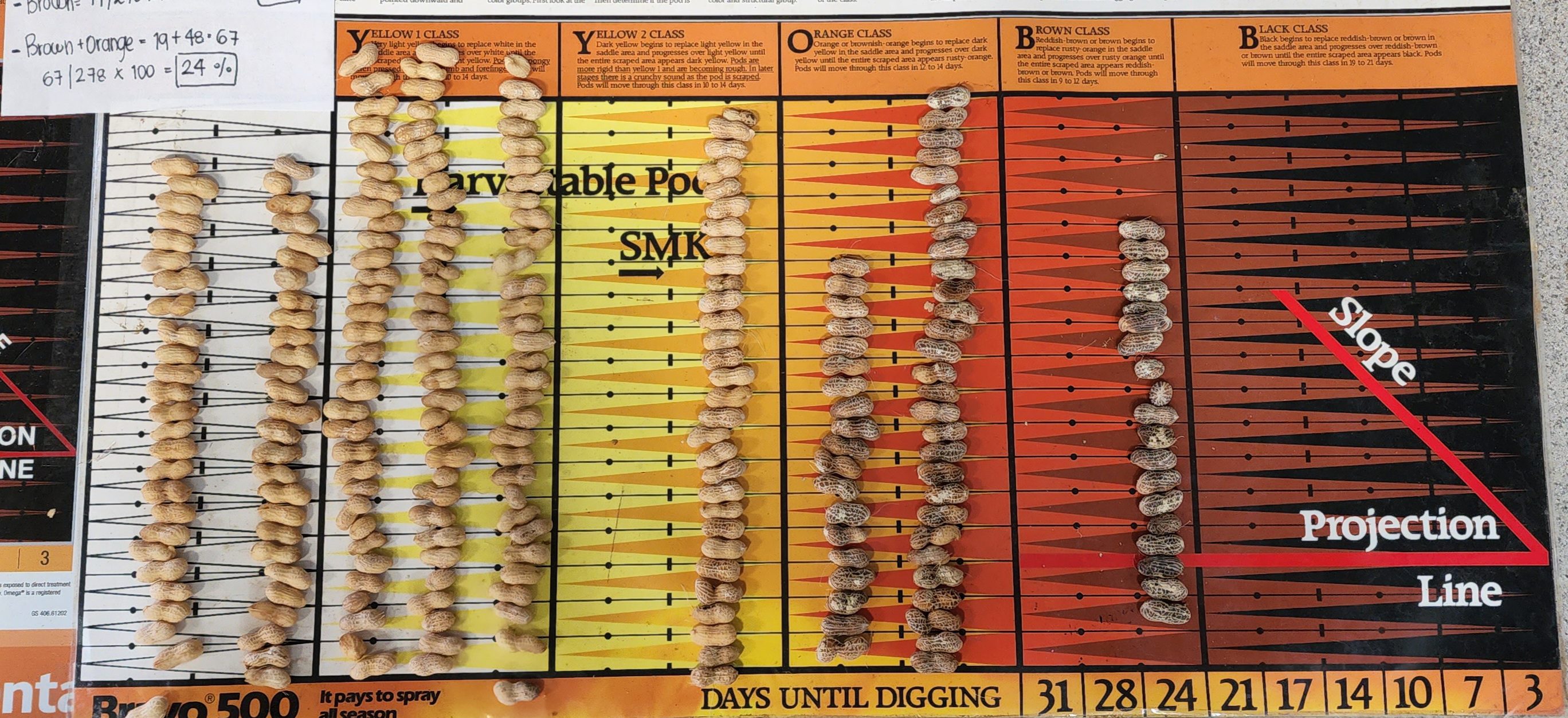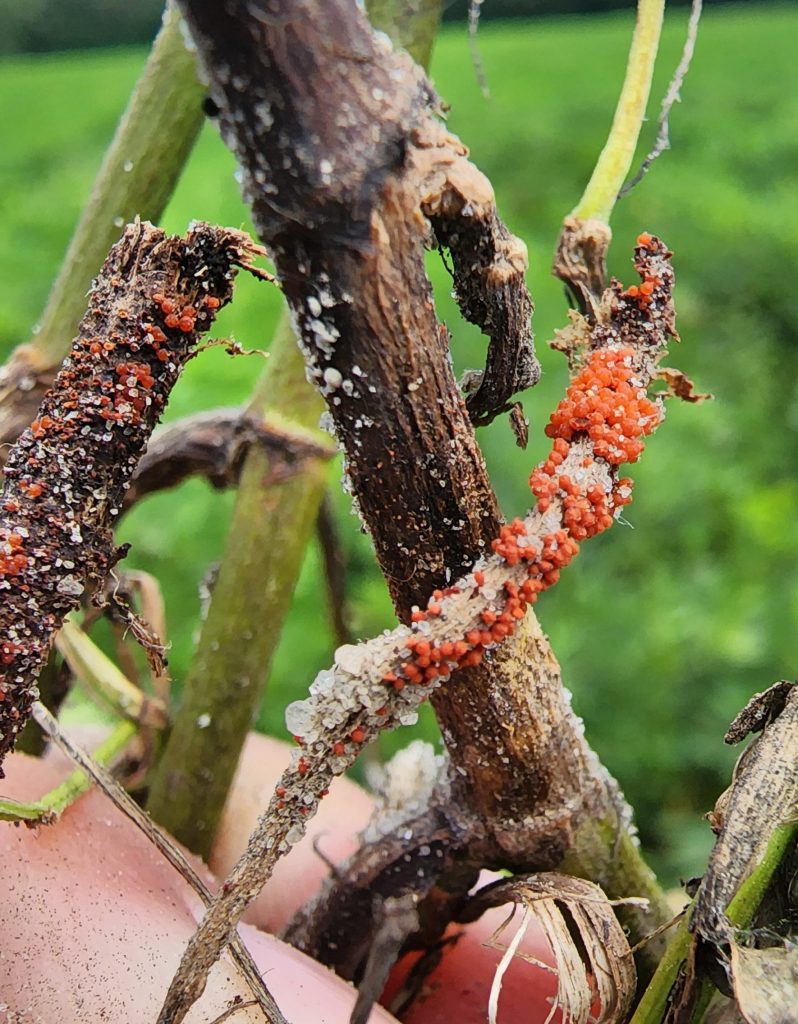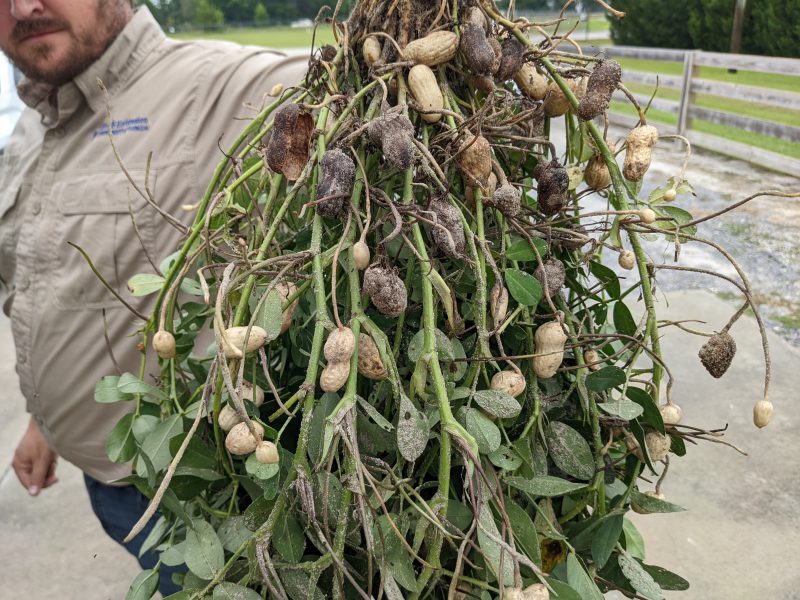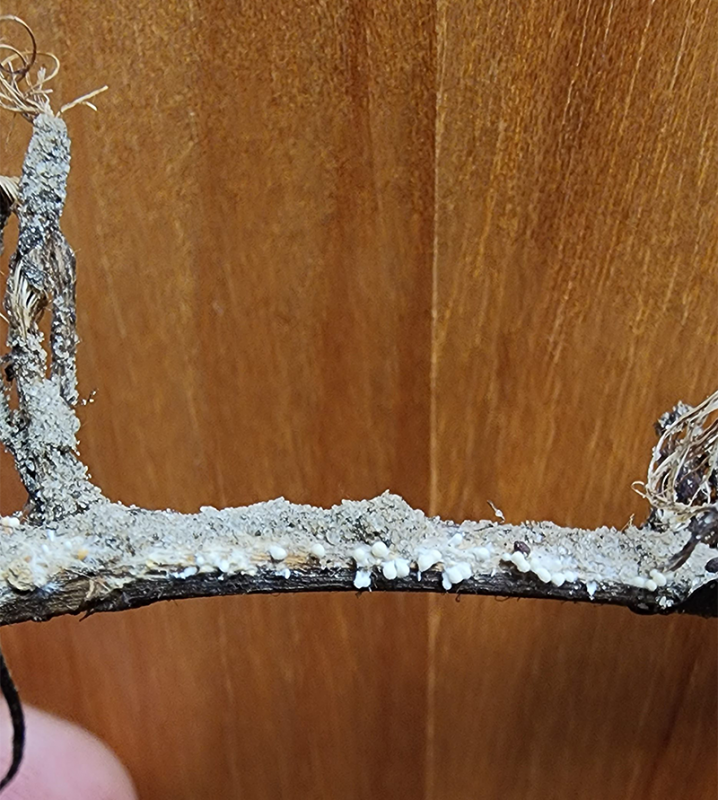Nicholas Dufault, UF/IFAS State Extension Plant Pathologist, Ethan Carter, UF/IFAS Regional Specialized Agent, Ian Small, UF/IFAS Plant Pathologist, Santosh Sanjel, UF/IFAS Plant Pathology Ph. D. Student and Zach Eldred, UF/IFAS Doctor of Plant Medicine Student
As the end of the peanut season approaches, there are many things that need to be done, however, do not forget to pay attention to late season diseases. Leaf spots and rust diseases are always on our minds, but harvest is an excellent time to evaluate many soilborne disease issues, especially in fields with minimum to no crop rotation. Below are three important disease situations which can be assessed before or shortly after digging peanuts.
–
Cylindrocladium Black Rot (CBR)
This disease is not typically on people’s radars; however, it can be a devastating disease especially after a warm winter. Field diagnosis of CBR is possible, but it is highly recommended that a laboratory diagnosis be made as there are many look-a-like diseases which include Neocosmospora foot and pod rot, Tomato Spotted Wilt Virus, the pod rot complex, and stem rot/white mold. While we do have some late season management options for CBR, the best management of this disease occurs at planting up till 40 days after planting (DAP). Early applications of fungicide products containing prothioconazole (e.g. Proline, Provost Silver and Propulse) can effectively reduce this pathogen’s impact on peanuts. The addition of foliar sprays of prothioconazole can also be helpful for CBR management if they are done between 40 and 90 DAP. Later season sprays can help manage the disease but typically do not lead to significant yield savings.
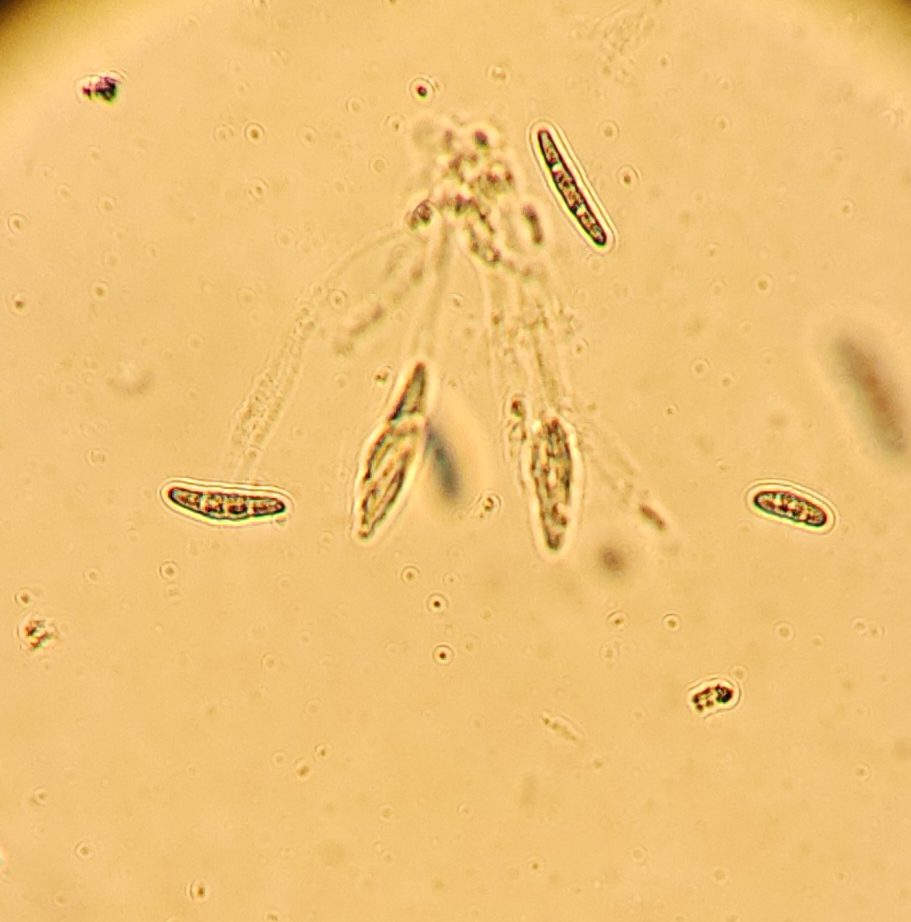
The ascospores and asci found inside the CBR pathogen’s red perithecia. Credit: Nick Dufault UF/IFAS
Peanut Pod Rot
Peanut pod rot is an issue that is often hard to diagnosis before you dig your peanuts as there are no above ground symptoms or signs of this disease. However, after digging it is not uncommon to find sections of the field with dark and rotting pods. This issue can be amplified by heavy rains, such as those parts of the state received from hurricane Ian. Pod rot can be caused by multiple fungal and oomycete (water mold) pathogens, including our previous disease, CBR. This makes diagnosis critical to a management plan for next season. Unfortunately, while this issue can be identified in the field, the pathogen cannot. It is recommended that producers collect a sample (5 or so plants) from their fields and send it to a diagnostic laboratory for pathogen confirmation. After diagnosis, consult your local Extension office for how to plan for the specific pathogen related to this disease issue in the future.
–
Stem Rot/White Mold
Stem rot/white mold continues to impact peanut production in Florida and throughout the Southeast. However, the extent of the damage from this disease can go unnoticed throughout the season depending on environmental conditions and the peanut’s response to the pathogen. This is why paying attention at digging is critical to developing and implementing effective management plan for 2023. Similar to CBR, there are early season fungicide options available (such as tebuconazole and prothioconazole) to help manage this disease as well as the possibility to improve the timing of typical stem rot applications (e.g. flutolanil and inpyrfluxam), which occur at 60 and 90 DAP. Also, there are multiple varieties available with resistance to this disease that should be considered in fields with a history and on a minimal crop rotation.
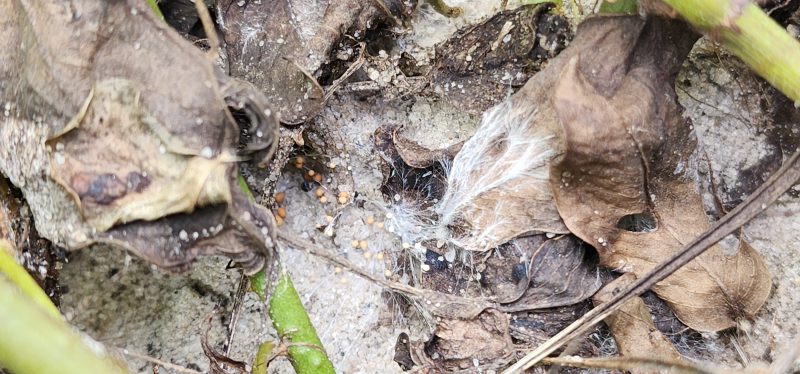
Sclerotia of the stem rot/white mold pathogen with white, fuzzy mycelia. Credit: Nick Dufault UF/IFAS
–
–
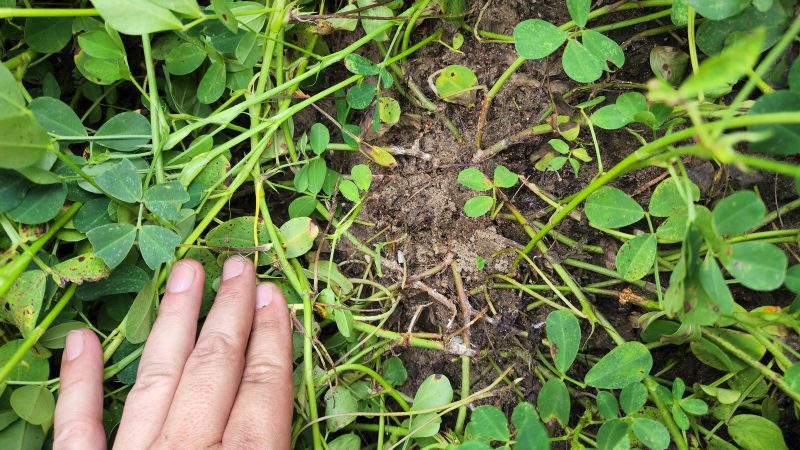
A field plant infected with white mold/stem rot in the field with white mycelia and sclerotia. Credit: Nick Dufault UF/IFAS
–
Final thoughts
Disease assessments can be time consuming and difficult to complete between harvest and extreme weather events such as hurricanes. However, if the issue is large enough to notice from the cab of a tractor or truck, it is worth assessing. There are some early season management options available for these pathogens that can be a “game changer” the next season when it comes to disease management. Unfortunately, there is not one management technique available that will manage all of these disease issues, which makes proper diagnosis important. If you are interested in more information on any of these diseases, please contact Dr. Dufault.
- Southern Rust Confirmed in the Florida Panhandle – June 2025 - June 6, 2025
- Stay Ahead of Disease with the Spore Report: A New Tool to Assist with Potato and Watermelon Management - April 11, 2025
- 2024 End-of-Season Florida Peanut Disease Notes - October 11, 2024

